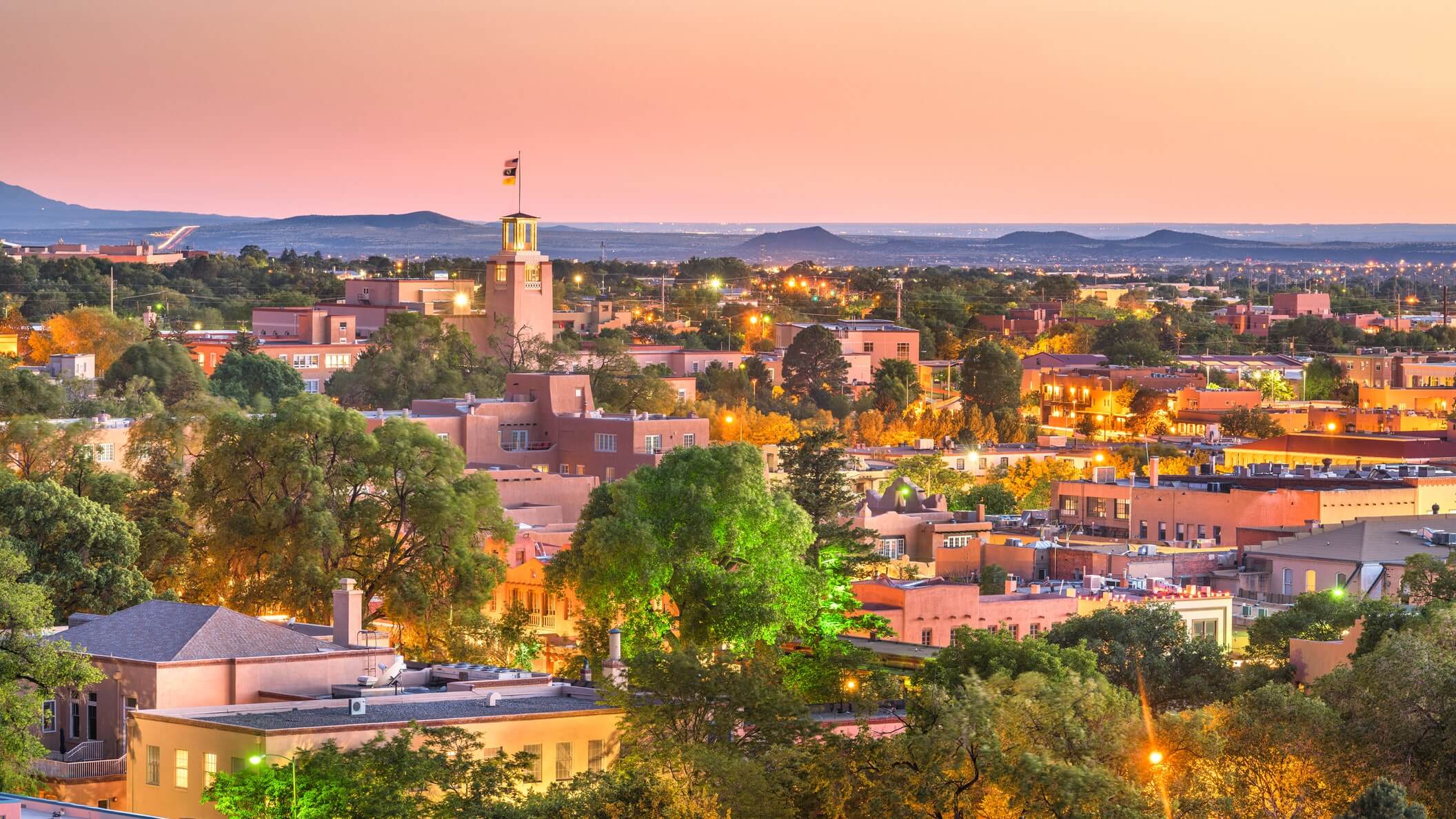your new mexico USDA loan experts.
Start your homebuying journey with numbers you can trust.

your new mexico USDA Loan experts.
You’re one of a kind. Your mortgage should be, too. Check rates now to see what’s possible.
-
"revolutionizing the
mortgage industry"

-
"Mortgage rates are
at rock bottom"

-
"finding the right lender
may be easier than you think"

Experience is everything
- 300+ reviews
- From people like you...and counting!
- 4.97 out of 5
- Average customer satisfaction rating

- "we are so grateful"
Danny was instrumental in helping our dream of owning a home come true. We are so grateful for all he’s done to help us.
- Michelle D. | Springtown, TX

- "Highly recommend!!"
I had bad credit and they helped me get my house. I am so grateful for everything! Highly recommend!!!
- Holly W. | San Antonio, TX

- "you will get your dream home"
He will explore multiple options for you to ensure you will get your dream home at a good rate. Highly recommend!!!
- Jeremy R. | Beeville, TX
your mortgage made easy
Convenient online access makes it easy to achieve your financial and homeownership goals.

- 1. Check Eligibility

- 2. Get Approved

- 3. Close
Verify the details and get to closing quickly with our simple checklist.
What is your goal?

I want to buy a home
Apply online to find a mortgage
as perfect as your home.

I want to save money
Check rates and find out how much you can save on your current loan.
USDA Home Loans in
New Mexico

If you are one of those home buyers who does not have the minimum down payment requirement with Conventional and USDA financing, then a USDA home mortgage loan may be for you.
USDA home mortgage loans are offered to help lower to moderate income households purchase homes in rural areas and in some cases on the outskirts of a city or in a medium sized town as determined by the United States Department of Agriculture (USDA) with NO DOWNPAYMENT requirement! USDA home mortgage loans offer many advantages to qualified borrowers looking to buy or refinance (no cash out) including:
- 100% financing
- No monthly mortgage insurance
- No asset requirements
- Gifts allowed for closing costs
- Required property improvements can be financed into the loan up to 102% of the “improved” value, which can be completed after closing.
Eligible USDA property types include single family homes and condominiums (primary residence only). USDA does have some income and property eligibility requirements. Please Contact us to find out these limits in your area of interest.
Even though a mortgage insurance premium is not required, USDA charges a 2% funding fee to guarantee the mortgage, which may be financed into the loan.
What is a USDA Loan?
A USDA Guaranteed Loan is a Government insured 100%, no down payment, purchase loan. These loans are only offered in rural areas and serviced by direct lenders that meet federal guidelines. We service these loans.
Buying a Home with USDA
USDA purchases are primarily designed to help low income individuals and households to purchase a home in rural areas. These loans do not require a down payment but do have income and property limitations. For more information please contact us.
We specialize in serving first time home buyers with USDA loans in New Mexico. A USDA mortgage offers many advantages, as it is very popular with first time homeowners, so you should expect lower interest rates and NO DOWN PAYMENT in relation to a conventional residential home loan.
Exciting things are happening with USDA home financing – USDA is only 1 of only a few options left for true 100% financing and you’ll want to stay up-to-date with changes in loan limit increases, and USDA Mortgage news, so feel free to subscribe to our USDA blog below.
We make the process of purchasing a new home or refinancing your current mortgage simple and straight forward by offering you the latest in financial tools set forth by the best banks in our country. This will enable you to make the most accurate financial decision. Purchasing a home or refinancing your current mortgage should not be stressful.
Please contact us for up to date rates and any other mortgage questions or apply now.
Refinancing with USDA
USDA refinances are for rate and term refinance loans (no cash out allowed). The original loan must be a Guaranteed Rural Housing Loan. For more information, please contact us.
The United States Department of Agriculture offers several different USDA Home Loan Refinance Programs. We are here to provide you with a variety of options in order to accomplish your USDA refinance goals.
If you are considering a USDA refinance of your current loan to lower your interest rate, or restructuring your payment and equity objectives, a USDA loan with can help you with your USDA loan refinance and present you the most viable and beneficial options in the marketplace.
It is important to be aware of USDA current interest rates to ensure that you will be able accomplish your financial goals with a USDA mortgage refinance.
If you are having trouble meeting your monthly mortgage payments, a USDA mortgage refinance can help.
Let us help you find the solution to your needs. More information on USDA Refinances.
How USDA Loans Work
USDA home mortgage loans for rural housing are designed to keep agricultural areas in the United States strong.
The USDA Home Mortgage Loan program is made to ensure that individuals of rural communities can compete in the global economy.
This will allow for rural communities to build better community centers and facilities thus attracting more people to move to those neighborhoods.
These loans are attractive to those who have stable income and credit but don’t have enough money for down payment.
Traditional mortgage loans can be more challenging for these types of buyers because they require a down payment and are unable to have a guarantee that the loan will be paid. USDA home mortgage loans on the other hand are insured and guaranteed by the government.
Under the Guaranteed Loan Program, the Housing and Community Facilities Program guarantees and insures loans made by lenders such as ourselves.
Under the terms of the program, an individual or family may borrow up to 100% of the appraised value of the home, which eliminates the need for a down payment.
Not only people living in rural areas qualify. Those living in the outskirts of a city or in a medium sized town may also qualify. Find out if you qualify for a USDA home mortgage loan by answering a few questions without any obligations.
Difference Between “Normal” Loans and USDA Loans
While many people deciding on a loan product rely exclusively on their lenders recommendation, you should understand the basic difference between a USDA loan and a Conventional Loan.
The term Conventional Loan includes all loans under the current FNMA and FHLMC lending limits.
Most people that have heard of USDA loans tend to associate them with purchase money transactions. While purchases are the most common use, USDA loans are also available for rate and term refinance loans.
In comparing a purchase money USDA loan against a Conforming or A paper loan, the USDA loan will generally have a lower payment. USDA loans will allow the borrower who has had a few “credit problems” or those without a credit history along with those with great credit to buy a home. A USDA Underwriter will require a reasonable explanation of derogatory items, but will approach a person’s credit history with common sense credit underwriting.
Most notably, borrowers with extenuating circumstances surrounding bankruptcy that was discharged 2 years ago can be approved for maximum financing. Conventional A Paper financing, on the other hand, would require 4 years to have passed to be eligible for consideration.
If a borrower does have past credit issues a USDA loan may have a significantly lower rate than the alternative conventional loan. Conventional programs generally have higher interested rate of require a larger down payment or Equity position. Many of these alternative loan products have Pre Payment penalties where as a USDA loan do not have such penalties.
About New Mexico
New Mexico is a state in the United States’ Southwest. It is one of the southern Rocky Mountain Mountain States, sharing the Four Corners region of the western United States with Utah, Colorado, and Arizona, and bordering Texas to the east and southeast, Oklahoma to the northeast, and the Mexican states of Chihuahua and Sonora to the south. The state capital, Santa Fe, is the oldest capital in the United States, having been established in 1610 as the government seat of Nuevo México in New Spain; the largest city is Albuquerque.
New Mexico is the fifth-largest of the fifty states, but it ranks 36th in population and 46th in population density, with just over 2.1 million residents. Its climate and geography are extremely diverse, ranging from forested mountains to sparse deserts; the northern and eastern regions have a colder alpine climate, while the west and south are warmer and more arid; the Rio Grande and its fertile valley run from north to south, creating a riparian climate that supports a bosque habitat and the distinct Albuquerque Basin climate. The federal government owns one–third of New Mexico’s land, and the state is home to numerous protected wilderness areas and national monuments, including three UNESCO World Heritage Sites.
Oil and mineral extraction, cattle ranching, agriculture, lumber, scientific and technological research, tourism, and the arts, particularly textiles and visual arts, are major sectors of New Mexico’s economy. Its total GDP (gross domestic product) was $95.73 billion in 2020, with a GDP per capita of around $46,300. State tax policy is characterized by low to moderate taxation of resident personal income by national standards, with tax credits, exemptions, and special considerations for military personnel and favorable industries; as a result, its film industry is one of the country’s largest and fastest growing. Because of its large size and favorable economic climate, New Mexico has a significant US military presence, including the White Sands Missile Range and strategically important federal research facilities such as Sandia and Los Alamos National Laboratories. The state housed several key facilities of the Manhattan Project, which created the world’s first atomic bomb, and was the site of the first nuclear test, Trinity.
Ancestral Puebloans, Mogollon, and modern Comanche and Utes all lived in New Mexico in prehistoric times.
More than 250 years before the establishment and naming of the present-day country of Mexico, Spanish explorers and settlers arrived in the 16th century, naming the territory Nuevo México after the Aztec Valley of Mexico; thus, the state did not derive its name from Mexico. New Mexico was a sliver of the viceroyalty of New Spain, isolated by its rugged terrain and the relative dominance of its indigenous people. It became an autonomous region of Mexico following Mexican independence in 1821, though this autonomy was increasingly threatened by the Mexican government’s centralizing policies, culminating in the Revolt of 1837; at the same time, the region became more economically dependent on the United States. Following the end of the Mexican–American War in 1848, the United States annexed New Mexico as part of the larger New Mexico Territory. It was admitted to the Union in 1912 after playing a key role in American westward expansion.
New Mexico’s history has contributed to the state’s distinct demographic and cultural characteristics. It is one of only six majority-minority states in the country, with the highest percentage of Hispanic and Latino Americans and, after Alaska, the second-highest percentage of Native Americans. New Mexico is home to the Navajo Nation, 19 federally recognized Pueblo communities, and three different Apache tribes. It has a sizable Hispanic population, which includes Hispanos, descendants of early Spanish settlers, as well as Chicanos and Mexicans. The New Mexican flag, one of the most recognizable in the United States, reflects the state’s diverse origins, combining the scarlet and gold colors of the Spanish flag with the ancient sun symbol of the Zia, a Puebloan tribe. The unique cuisine, music genre, and architectural style of New Mexico reflect the confluence of indigenous, Spanish, Mexican, Hispanic, and American influences.

